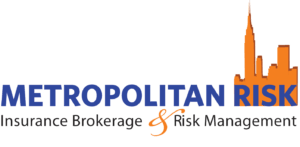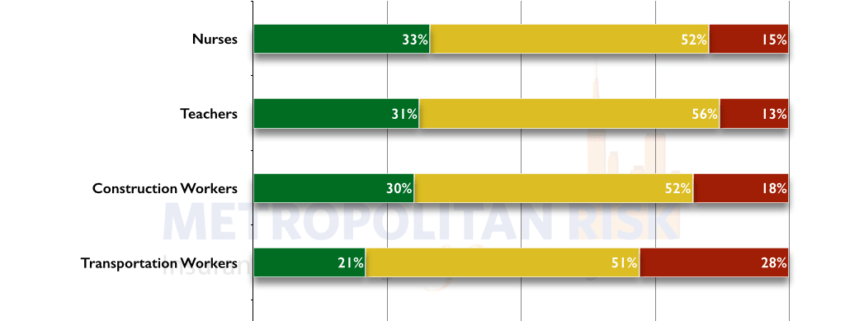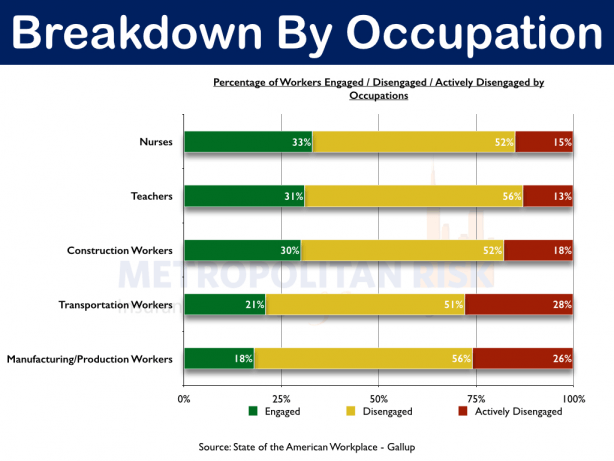I had the opportunity to listen to Tony Robbins speak for the first time this past month. He spoke for nearly 3 hours about the power of “engagement” and how it can help you gain a competitive edge in both your business and personal life. Being in risk management, he certainly got my attention when he rattled off a few statistics:
“Work units in the top quartile in employee engagement experience:
-
48% fewer safety incidents
-
41% fewer patient safety incidents
-
41% fewer quality defects”
These companies also saw:
- 25% to 65% less turnover (depending on industry)
- 28% less shrinkage
- 37% less absenteeism
- 10% improvement in customer satisfaction
- 22% in profitability
- 21% in productivity
Source: State of the American Workplace – Gallup
It certainly makes sense, right? To put it simply happier employees are more likely to be focused and want to perform better. They’re also less likely to take advantage of their employer. But like me, you might have some questions such as, what exactly is “engagement”? How is it measured? How can I get it? When I got home I took a deep dive in to Gallup’s 70 page study on the subject. Like me, you might be shocked at some of the statistics within it.
 What is employee engagement?
What is employee engagement?
Employee engagement essentially measures the relationship between a company and it’s employees. An employee can be classified as engaged, not engaged, and finally the dreaded “actively disengaged.” Gallup has been measuring this since 1998 and has surveyed over 25 million employees since that time.
- An “engaged employee” works with passion and feels a profound connection to their company. They drive innovation and move the organization forward.
- An employee who is “not engaged” is essentially checked out. They are sleepwalking through their workday, putting time but not energy or passion in to their work.
- Actively Disengaged employees are not just unhappy at work; they are busy acting out their unhappiness. Every day, these workers undermine what their engaged coworkers accomplish.
An alarming amount of people are disengaged
“Currently, 52% of American workers are not engaged, and worse, another 18% are actively disengaged in their work. Gallup estimates that these actively disengaged employees cost the U.S. between $450 billion to $550 billion each year in lost productivity. They are more likely to steal from their companies, negatively influence their coworkers, miss workdays, and drive customers away.”
This means only three out of every ten American workers are engaged employees and you are paying two out of every ten workers to actively hurt your company!
What Can You Do?
The first step to improving your engagement levels is finding a way to measure them accurately. For example, implement a survey that keeps track of employee opinions similarly to what you might already do for your customers. This may have to be done anonymously. Then take very targeted actions to improve what matters most to your employees according to the survey. If you need assistance setting up this process a Risk Advisor here at Metropolitan Risk can assist.
In terms of actions you can take to improve engagement, there are hundreds of suggestions from a multitude of sources. However the one aspect that every source states is most important is selecting the right managers. If an employee’s relationship with their manager is fractured, then no amount of perks will persuade employees to perform at high levels. Managers need to show that they value their employees, and express genuine care and concern for them. This is why at Metropolitan Risk we put an emphasis on Supervisor Training, stressing the importance of the position as it relates to safety. We also track claims back to a supervisor to see if there’s a trend. If you had to choose one thing to improve employee engagement, it should be selecting the right managers, as it has an immediate affect.
Employees are more likely to be engaged if they are provided:
1. challenging work, and opportunities for advancement.
2. a clear vision for the company.
3. clear expectations and feedback.
4. congratulations instead of just negative feedback (many feel they receive immediate feedback only when performance is poor).
5. an opportunity to contribute to the success of the organization (employees want to know their work matters).
6. an opportunity to participate in decision making, especially when it relates directly to their duties.
7. a team that trusts and cooperates with each other.
8. a company with a strong reputation and high ethical standards (people want to be proud of their jobs).
9. confidence in the company. This comes from number 8.
*Source: What Engages Employees the Most Or, The Ten C’s of Employee Engagement
You’ll notice all of these come from good leadership. You don’t need to be Google, providing nap pods for your employees to lead the way in engagement. You need good managers, positive culture, and an awareness of what your employees’ core needs are.
Takeaways
1. Employee engagement is not just nice to have. It is crucial to having long term success as a business.
2. Quality managers are the most important component to employee engagement.
3. There are a multitude of other ways to engage employees.
4. You should first implement a way to measure engagement if you haven’t done so already.
5. Human Resources has a tremendous impact on workers comp and your bottom line.
6. While certain industries struggle more than others with engagement (see above graph) remember that your workers’ compensation costs(due to the experience mod) are only based off companies within your class of business.




 Photo by Ilya Pavlov on Unsplash
Photo by Ilya Pavlov on Unsplash 
 Photo by Sam zeng on Unsplash
Photo by Sam zeng on Unsplash
